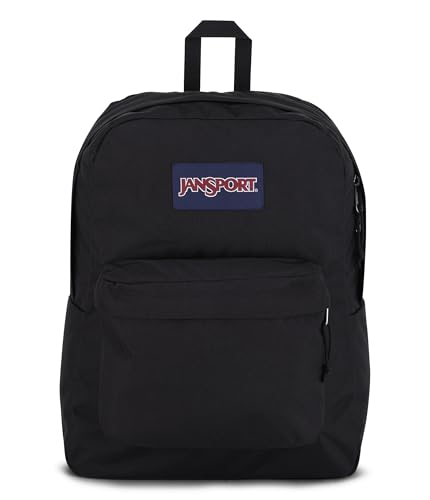Backpack Size Chart
| Backpack Type | Volume (Liters) | Ideal Use | Body Size Consideration |
|---|---|---|---|
| Daypack (Small) | 10 – 20 L | Short day hikes, city commuting, carrying essentials | Small to medium frames |
| Daypack (Medium) | 20 – 30 L | Day hikes, daily use, urban adventures | Medium to large frames |
| Daypack (Large) | 30 – 40 L | Longer day hikes, overnight trips | Larger frames or those carrying heavier loads |
| Weekend Backpack (Small) | 40 – 50 L | Short weekend trips, overnight camping | Medium to large frames |
| Weekend Backpack (Medium) | 50 – 70 L | Weekend getaways, light backpacking | Larger frames or those with more gear |
| Weekend Backpack (Large) | 70 – 80 L | Extended weekend trips, light multi-day backpacking | Larger frames or those carrying additional gear |
| Expedition Backpack (Medium) | 80 – 100 L | Multi-day trekking, long expeditions | Large frames, extensive gear for longer trips |
| Expedition Backpack (Large) | 100 – 130 L | Extended multi-day expeditions, mountaineering | Large to extra-large frames, heavy gear |
Looking for the perfect fit? Check out these Best-Selling Backpack.

Choosing the Right Backpack Size:
- 10 – 20 L (Small): Ideal for carrying essentials like a water bottle, snacks, and a light jacket. Common for commuting or short urban trips.
- 20 – 40 L (Medium to Large): These are great for day trips, including a change of clothes, camera, lunch, and a first aid kit. For short hikes or daily use.
- 40 – 70 L (Weekend to Medium Expedition): These are suitable for weekend trips or longer hikes where you need to carry a bit more, such as extra layers, a sleeping bag, and more food.
- 70 – 130 L (Large Expedition): For multi-day trips or expeditions where you’ll be carrying tents, heavy clothing, food, and more equipment. These backpacks are ideal for serious trekkers and mountaineers.
How to Choose Backpack Size Based on Body Size:
- Torso Length: Backpack size can vary based on your torso length. Measure from the base of your neck to the top of your hip bones to determine your torso length.
- Hip Belt: A good backpack should sit comfortably on your hips, not just your shoulders, so make sure the hip belt fits well and the backpack distributes weight evenly.
- Pack Fit: Your backpack should sit snugly on your body, with the weight of the pack being borne by your hips rather than your shoulders. If the backpack is too large or too small, it will be uncomfortable and may cause strain during extended wear.
Additional Considerations:
- Frame Type: Some backpacks have internal frames (better for heavier loads) while others have external frames (better for lighter loads but more bulky).
- Purpose of Use: Choose your backpack based on whether you’re using it for hiking, commuting, travel, or expedition.
- Weather Conditions: A larger backpack is usually recommended for trips where you will need to carry more gear, including sleeping bags and tents for longer or more remote trips.
Would you like help in creating an interactive tool or table for selecting backpacks on your website? Feel free to ask!
🎒 Backpack Size Chart – FAQs
1. How is backpack size measured?
Backpack size is typically measured in liters (L), which reflects the internal volume of the pack. Some charts may also list dimensions (height × width × depth) in inches or centimeters.
2. What size backpack do I need for daily use or school?
For everyday activities like school, commuting, or casual use, a 15–30L backpack is usually perfect. It fits a laptop, notebooks, and personal essentials comfortably.
3. What’s the best backpack size for hiking or travel?
- Day hikes: 20–30L
- Weekend trips: 30–50L
- Multi-day/expeditions: 50–70L+
Choose based on trip length, gear needs, and how light you pack.
4. What is torso length, and why does it matter?
Torso length (not your height!) determines proper backpack fit for hiking packs. Measure from the base of your neck (C7 vertebra) to the top of your hip bones (iliac crest). Backpacks often come in sizes like S/M/L based on torso length.
5. How do I know if I need a small, medium, or large backpack?
- Small: Torso under 16″
- Medium: Torso 16″–19″
- Large: Torso over 19″
Some packs are adjustable, which is great for growing teens or people between sizes.
6. What backpack size do kids need?
For children, choose a backpack that is 10–20% of their body weight. For school, most kids do well with 10–20L packs. Fit is more important than capacity—make sure it sits well on their shoulders and hips.
7. How do I choose between liters and dimensions?
Liters measure how much the pack holds, while dimensions tell you how it will fit on your body or in a space (like airplane overhead bins). Always consider both, especially for travel.
✅ Conclusion
Choosing the right backpack size ensures better comfort, organization, and function—whether you’re headed to class, the trail, or a weekend getaway. Use volume (liters) as your guide, and always check fit based on torso length and intended use. The right pack makes every journey easier, lighter, and more enjoyable. 🎒🌍






